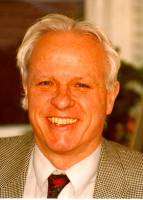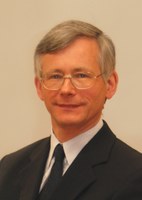Surrey/Sussex Centre
| Phase OneView Centre Details | Phase TwoView Centre Details | Phase Three | |||
| Centre: | Surrey/Sussex, United Kingdom ( Western Europe ) | ||||
| Principal Investigator: | Professor David Strachan | ||||
| Age Groups: | 13-14 | Timeframe: | March 2002 to July 2002 | ||
| Sampling Frame: | 13-14yr: Same geographical area as in ISAAC Phase One survey. West Sussex, all state secondary schools in North Education District with more than 100 pupils/year: AND: North West Surrey, random selection of mixed state secondary schools with more than 100 pupils/year. | ||||
Personnel
Personnel
Professor H Ross Anderson

Division of Community Health Sciences
St George's, University of London and MRC Centre for Environment and Health
Cranmer Terrace
Tooting
United Kingdom
Roles:
- ISAAC Steering Committee
- National Coordinator for United Kingdom
- Phase One collaborator for Surrey/Sussex
Dr Balvinder Kaur
Department of Public Health Sciences
St Georges Hospital Medical School
Cranmer Terrace
Tooting
United Kingdom
Roles:
- Phase Two collaborator for West Sussex
Pauline Lanridge
Senior registrar in public health medicine
St Georges University of London
Cranmer Terrace,
London SW17 0RE, UK.
United Kingdom
Roles:
- Phase One collaborator for Surrey/Sussex
Ruth Ruggles
Specialist registrar in public health
St George’s University of London,
Cranmer Terrace,
London SW17 0RE,
United Kingdom
Roles:
- Phase One collaborator for Surrey/Sussex
Professor David Strachan

Professor of Epidemiology
Division of Community Health Sciences
St George's, University of London
Cranmer Terrace, Tooting,
United Kingdom
Roles:
- ISAAC Executive
- ISAAC Steering Committee
- Phase One Principal Investigator for Surrey/Sussex
- Phase Two Principal Investigator for West Sussex
- Phase Three Principal Investigator for Surrey/Sussex
Why was this centre selected for ISAAC?
As the ISAAC methodology was being developed in the early 1990s, there was interest from local public health physicians in the possible adverse health effects of air pollution around London Gatwick Airport. The West Sussex area, which includes the airport, was therefore chosen for pilot studies of the ISAAC video [ref 1] and subsequently expanded to include parts of the neighbouring county of Surrey, for the Phase One study.
These areas lie outside the Greater London conurbation and consist of small towns, with a high proportion of commuters, and intervening areas of farmland and forest. Compared to the UK as a whole, and to the whole of south-eastern England, this is a relatively prosperous area.
Our Phase One study was designed specifically to investigate two other methodological issues: firstly, whether the prevalence of symptoms, as obtained by the ISAAC written questionnaire, varied with season of administration of the survey; and secondly, whether the prevalence differed between child responses and parental responses in the same age group.
Our Phase Two studies were restricted to the West Sussex area which had been used for the earlier pilot studies. In Phase Three, the larger Surrey & Sussex area was used, as in Phase One.
Our experience of ISAAC
Pilot studies: The earlier version of the ISAAC video (mainly white ethnic children) was used. It was generally well accepted, but fieldworkers remarked that some children found the scene of severe asthma distressing. This was perhaps to be expected, as the scene depicts a potentially life-threatening asthma attack. This scene was eventually retained in the Phase One video questionnaire (both versions), and has been very widely used.
Phase One: As ISAAC Phase One included a separately funded nationwide survey of over 27,500 teenage children in 93 schools across England, Scotland, Wales and outlying islands, which took place over a whole school year, we concentrated the Surrey & Sussex study on addressing the possibility that the prevalence of symptoms might be affected by the season of the survey. Thus, we ensured that a balanced selection of schools from each part of the study area were visited in each of the three school terms (autumn, spring and summer). Only 13-14-year-old children were included, but in a random sample of two-thirds of these children, we also sent questionnaires (based on the ISAAC core questionnaire for 6-7-year-olds) to the parents. This allowed for comparisons between the responses by children and by parents at the level of the individual child, and the population as a whole. By omitting the parental questionnaire from a random one-third of the children, we were able to consider the possibility of response bias among the children whose parents had been mailed.
Phase Two: Our Phase Two fieldwork followed the core ISAAC Phase Two protocols, with hypertonic saline challenge, blood sampling and dust collection confined to a stratified sample of wheezers and non-wheezers. However, we also performed a bronchial challenge with exercise using Michael Burr’s protocol in all children at the time they attended for skin prick tests and skin examination (several weeks before the hypertonic saline challenge). The exercise and saline challenge results showed a limited degree of correlation at the level of individual children, but both generated a much higher prevalence of bronchial hyperreactivity in West Sussex than in a comparable study carried out by our collaborator Alfred Priftanji in Tirana, Albania. These comparisons, between two centres at the extremes of the worldwide range of wheeze prevalence in Phase One, were published in the Lancet in 2001 [ref 2]. During the fieldwork, we were puzzled about the high proportion of West Sussex children who responded with a fall in FEV1 early in saline challenge, and became concerned that there might be a flaw in our survey technique. Francine Aarts, who had recently completed the Phase Two fieldwork in the Netherlands, kindly visited West Sussex during our fieldwork and did not find anything particularly unusual about our methods, but commented that the proportion of responsive children seemed a lot higher than in the Dutch study. Later, we exchanged ultrasonic nebulisers with the Spanish Phase Two centres to check whether there was something unusual about our equipment, but did not find any major differences. When we later compared West Sussex and Tirana using the results of the hypertonic saline challenge, they differed greatly in the prevalence of bronchial hyperreactivity [ref 3]. This similarity of results using two different bronchial challenges offers supporting evidence that there is truly a high prevalence of responsive airways in West Sussex. (Due to the proximity to Gatwick Airport, we sometimes called this the “British Airways" phenomenon.)
Phase Three: Originally we had planned to focus Phase Three on the West Sussex schools which had participated in the pilot study of the asthma written and video questionnaires in 1991 [ref 1]. There was initially slow recruitment of schools in West Sussex, so sampling was extended to West Surrey. Both areas correspond to the “Surrey & Sussex” Centre in ISAAC Phase One. Several pupils commented on the question about mother’s level of education (in the environmental questionnaire) saying it was “too personal” and some pupils were offended by the question. An extra question was included in the environmental questionnaire (placed at the end after ISAAC questions): Have you ever smoked a cigarette? Yes / No. If yes, how often do you smoke nowadays? At least once a day on average / less than once a day, but at least once a week / less than once a week / I do not smoke at all nowadays. This was included because in the nationwide ISAAC UK Phase One, this question had been used and proved to be strongly associated with wheezing in the 13-14-year-olds.
References
-
Pearce N, Weiland S, Keil U, Langridge P, Anderson HR, Strachan D, Bauman A, Young L, Gluyas P, Ruffin D, Crane J, Beasley R. Self-reported prevalence of asthma symptoms in children in Australia, England, Germany and New Zealand: an international comparison using the ISAAC written and video questionnaires. Eur Respir J 1993;6:1455-1461. PMID: 8112438
- Priftanji A, Strachan D, Burr M, Sinamati J, Shkurti A, Grabocka E, Kaur B, Fitzpatrick S. Asthma and allergy in Albania and the UK. Lancet 2001;358:1426-1427. PMID: 11705492
- Büchele G, Genuneit J, Weinmayr G, Björkstén B, Gehring U, von Mutius E, Priftanji A, Stein RT, Addo-Yobo EO, Priftis KN, Shah JR, Forastiere F, Svabe V, Crane J, Nystad W, García-Marcos L, Saraçlar Y, El-Sharif N, Strachan DP; ISAAC Phase Two Study Group. International variations in bronchial responsiveness in children: findings from ISAAC Phase Two. Pediatr Pulmonol 2010;45:796-806. PMID: 20597079
Acknowledgements
We gratefully acknowledge financial support from the National Asthma Campaign (Phase One), the SW Thames Regional Research & Development Scheme (Phase Two), and the European Union (Phase Two centralised laboratory analyses). We are also indebted to all the children, parents and school staff who participated in the surveys, and wish to thank our fieldwork teams for their enthusiasm and diligence throughout each study.

